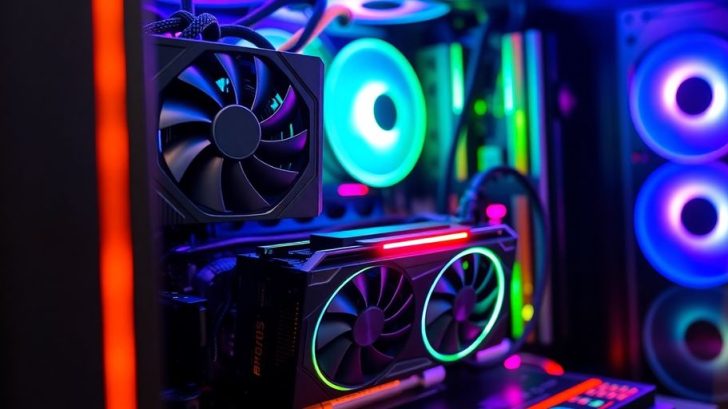In the world of cryptocurrency mining, understanding the nuances of your setup can make all the difference. In this article, we explore the critical mistakes many make with Hive OS, particularly when optimizing a multi-GPU mining rig like the 5700 XT. We’ll delve into BIOS modifications, overclocking techniques, and the importance of thermal management to ensure your mining operation runs smoothly and profitably.
Key Takeaways
- Understand the Risks: Rushing BIOS modifications can lead to costly mistakes.
- Optimize Your Setup: Proper overclocking and thermal management are essential for maximizing efficiency.
- Stay Informed: Keep up with updates and changes in the mining landscape to avoid pitfalls.
The Importance Of Hive OS
Hive OS is a powerful platform for managing your mining rigs. It simplifies the process of monitoring and optimizing performance, especially for multi-GPU setups. However, many users overlook the importance of understanding the underlying processes, particularly when it comes to BIOS modifications.
Unsustainable Business Models
The cryptocurrency landscape is ever-changing, and many miners are still relying on outdated models. Mining Ethereum directly and selling it immediately is becoming less sustainable. Instead, consider alternative strategies, such as mining layer two solutions or diversifying your portfolio with other coins.
Updating Hive OS
Before diving into BIOS modifications, ensure that your Hive OS is up to date. This can prevent compatibility issues and improve overall performance. Here’s a quick checklist for updating:
- Log into your Hive OS account.
- Navigate to the updates section.
- Follow the prompts to install the latest version.
Overclocking Techniques
Overclocking can significantly enhance your mining rig’s performance, but it must be done carefully. Here are some tips:
- Start Slow: Gradually increase clock speeds and monitor performance.
- Test Stability: Use benchmarking tools to ensure your settings are stable.
- Monitor Temperatures: Keep an eye on GPU temperatures to avoid overheating.
Risks Of Copying Overclock Settings
One common mistake is copying overclock settings from other miners without understanding the specific hardware. Each GPU can behave differently, and what works for one may not work for another. Always tailor your settings to your specific rig.
Flashing The BIOS
Flashing the BIOS can unlock additional performance, but it’s crucial to follow the correct procedures:
- Backup Your Current BIOS: Always save your original BIOS before making changes.
- Use Reliable Software: Tools like Red BIOS Editor can help you make necessary adjustments.
- Follow Instructions Carefully: Ensure you understand each step to avoid bricking your GPU.
Rebooting After BIOS Flash
After flashing the BIOS, a proper reboot is essential. This allows the new settings to take effect. Here’s how to do it:
- Shut down your rig completely.
- Wait for at least 30 seconds to allow for static discharge.
- Power it back on and monitor the performance.
Verifying Miner Post-BIOS Flash
Once your rig is back online, verify that the miner is functioning correctly. Check the following:
- Hash Rate: Ensure it meets your expectations.
- Temperature: Monitor for any overheating issues.
- Stability: Run your miner for a few hours to confirm stability.
Importance Of Thermal Management
Thermal management is crucial for maintaining optimal performance. Here are some effective cooling techniques:
- Use Quality Fans: Invest in high-quality fans to improve airflow.
- Create Thermal Layers: Organize your rig to promote efficient heat dissipation.
- Monitor Temperatures: Regularly check GPU temperatures to prevent overheating.
Conclusion
Informed decisions are key to successful cryptocurrency mining. By understanding the intricacies of Hive OS, BIOS modifications, and thermal management, you can avoid costly mistakes and optimize your mining rig for maximum profitability. Stay engaged with the community, keep learning, and adapt to the ever-evolving landscape of crypto mining.







Be the first to comment